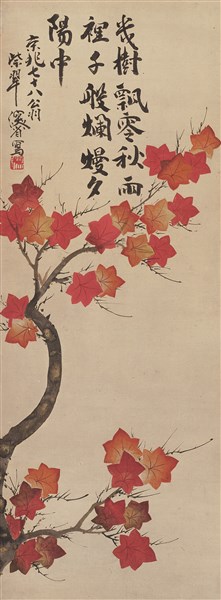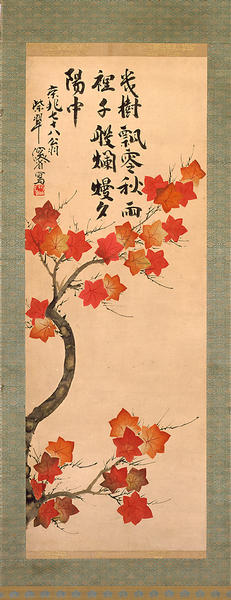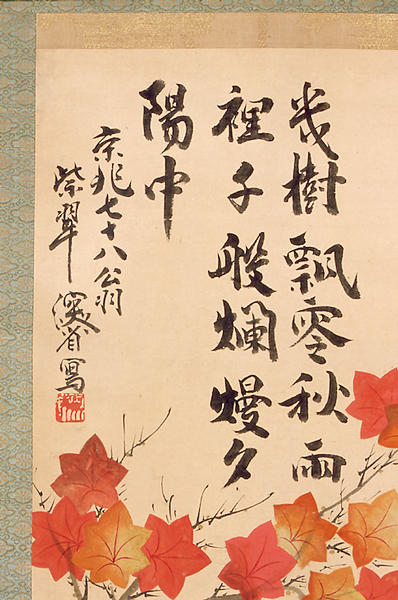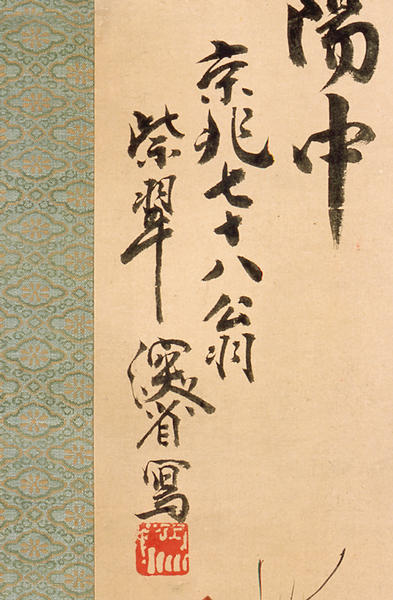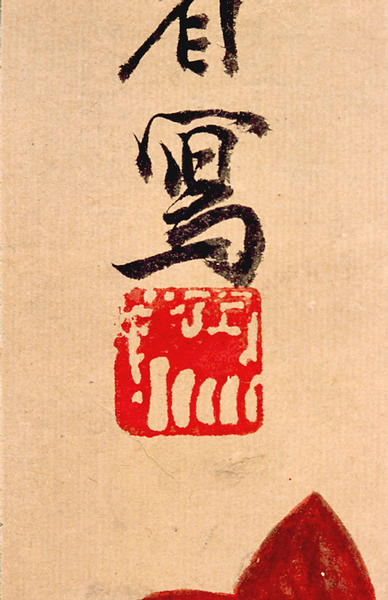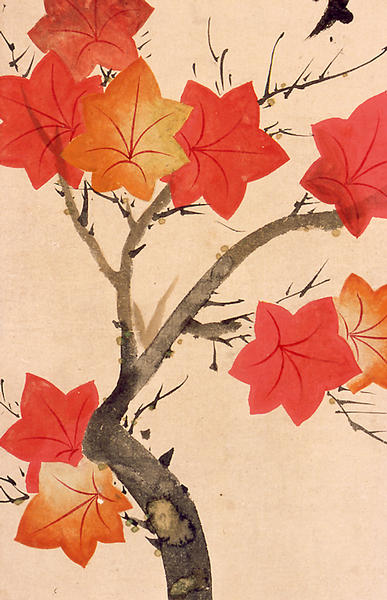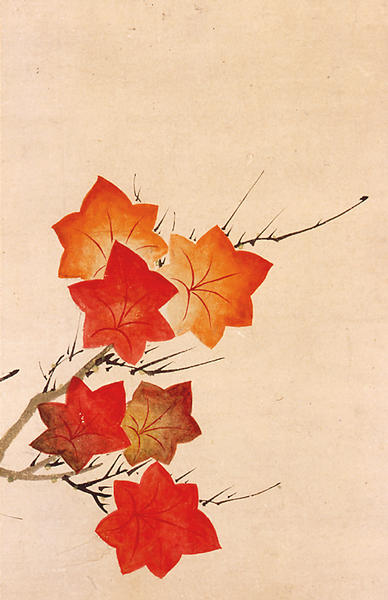楓図 尾形乾山筆
- 江戸時代
- 18c
- 紙本墨書著色
- H-109.3 W-40.3
楓図
楓図 図録解説
同じ紅葉でもこちらは、縦長の画面に大きく幹枝とともに色づいた楓が描かれています。秋雨に濡れて葉は赤みが増し、さらに夕陽に照り映えていっそう赤々と風情は弥増しに増す。そんな詩意を受けてこの絵は描かれたのでしょう。幹にはたらし込みの技法も見られ、これぞ琳派といった絵となっています。ただし画面上方の着賛は漢詩で、ここには乾山の文人的な部分が色濃く出ています。今にも枝につかんばかりの勢いで所狭しと記された筆づかいは、雄渾で迷いがなく、どこまでも「書の人」であった乾山らしさが滲み出ています。落款から乾山晩年、七十八歳の作と知れます。
幾樹飄零秋雨
裡千般爛火曼夕
陽中
Red Maple Leaves
Red Maple Leaves
Again the subject is maple leaves, but here the leaves, in their autumn colors, are depicted with a large branch of the tree in a vertical picture plane. The leaves, damp in the autumn rain, glow more redly and, reflecting the setting sun, grow yet more red: perhaps a poem to that effect that inspired this painting. Tarashikomi, a characteristically Rimpa technique, was used on the branch, layering the pigment on surface areas still wet with paler pigment, to create an effect of pooled colors with softly blurred edges. The poetic inscription in the upper part of the picture plane is a Chinese poem; here Kenzan's literati character comes to the fore. The forceful calligraphy and the tight brushwork are powerful and reveal how very much Kenzan was a man of letters. The signature tells us that this painting dates from late in Kenzan's life, when he was seventy-seven.
